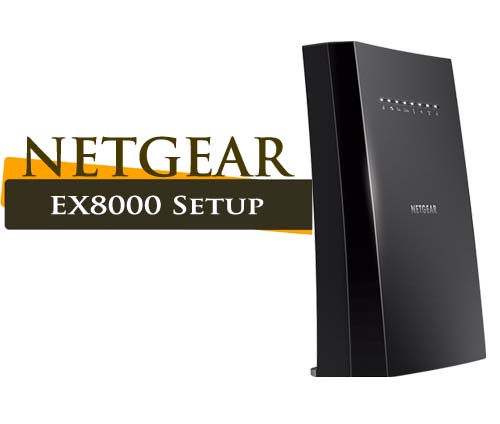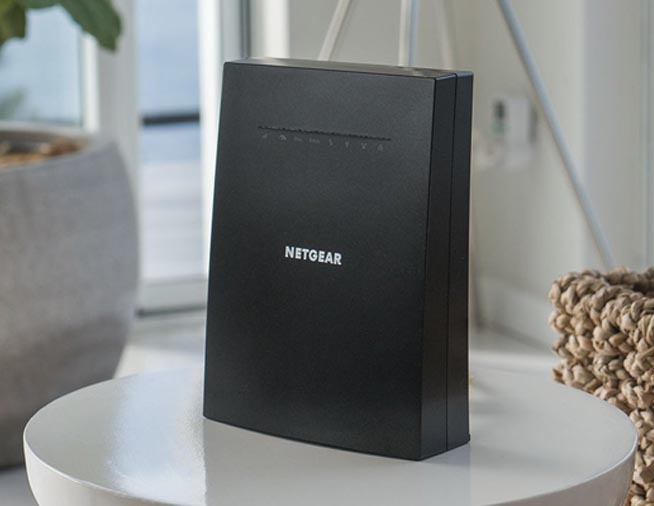Netgear EX8000 Setup (AC3000 X6S)
Netgear EX8000 AC3000 X6S is a Tri Band wifi range extender which is really easy to set up and use. Nighthawk AC3000 comes with a dedicated 5 Ghz band that can carry upto 1.7 Gbps of speed that you can extend for your devices. There are two ways for the Netgear EX8000 Setup process.
Method 1
Connect your EX8000 with W.P.S Wi-Fi Protected setup is the fastest way to configure your EX8000 Wi-fii extender, in this process you don’t need to get on any of your devices or fill in any details.
Method 2
Connect the EX8000 with Netgear Installation assistant To initiate with netgear installation assistant you have to grab a wireless device and also you will have to launch the browser on it.


Netgear Nighthawk EX8000 AC3000 X6S W.P.S Setup
To setup your Netgear nighthawk EX8000 (AC3000) X6S with W.P.S follow the steps given below.
- Plug & Turn on your Netgear nighthawk EX8000 Extender.
- For initial setup your AC3000 X6S extender should be close to the router.
- Now you will see the power LED on your EX8000 turning green.
- Once the light is green, you need to hit W.P.S on the extender.
- After that you need to press the W.P.S button on your existing Wi-Fi.
- Within two minutes you will see the client link LED turning solid white.
- If your router supports 5Ghz band then you will have to again push the button on your extender and your router.
8.You can move the EX8000 at the location with poor Wi-Fi signal.
In case you are still stuck with the setup process, you may dial us on our toll-free number or use our live chat for help.
Netgear EX8000 Manual Setup
Setup Nighthawk X6S AC3000 manually
To setup your Nighthawk AC3000 X6 manually please follow the given steps below:
- Firstly plug in your Nighthawk EX8000 AC3000 X6S.
- Now turn on your extender.
- Make sure that your extender is near the router.
- Get on your wifi enabled device like laptop or phone.
- Pull up a browser like microsoft Edge,safari or chrome.
- Now you will see the netgear Ex8000 installation window.
- To go with this process you will have to follow the prompts.
- Now you can move the extender to a new desired location.
- After placing the extender at the best location you can connect your client devices to the extended wifi network.


Netgear AC3000 X6s Firmware Update
Let’s discuss how to check the Netgear X6s wireless extender firmware:
- Before updating the firmware, make sure your EX8000 extender is plugged in properly to the power outlet.
- Connect your smartphone or laptop with Nighthawk_Ext network.
- Once connected, go to the web browser and type www.mywifiext.net on the address bar.
- You are now on the Netgear Nighthawk AC3000 X6s Extender page.
- Enter your credentials and login to your account.
- It will take a couple of minutes to check any upgrade in the firmware.
- Click on the “Yes” and it will start updating the firmware for the Netgear AC3000 extender setup.
Note: Do not unplug or remove the Netgear AC3000 wifi extender from the power socket while updating the latest firmware.
How to reset the Netgear EX8000 to the factory default settings?
- To reset the Netgear EX8000 WIFI Range Extender.
- Plug the Nighthawk EX8000 X6s in the same room as your main router.
- Once you see the power solid green lights on the wireless repeater.
- Find any paper clip or tooth pick to reset Netgear EX8000.
- Now push n hold the factory reset button on the extender for 10-15 seconds.
- While resetting the AC3000 your extender power light turn into an amber.
- Release the pin hole and wait for the power led light to turn green.
- Follow the above given details to setup Netgear EX8000 to your new modem or router.

How to setup Netgear EX8000 with Mywifiext.net?
- To setup Netgear EX8000 Nighthawk Mesh Extender.
- Plug the EX8000 Nighthawk to the power outlet.
- Once the power led light turn solid white on the X6s.
- Power on any wireless enabled device i.e. phone or a tablet.
- Now go to setting options on your device and click on the WIFI manger.
- There you will see an open network Netgear AC3000 Tri-band Extender.
- Open any up to date web browser i.e. Google Chrome, Mozilla Firefox or Microsoft Edge.
- And on the top of the address bar type www.mywifiext.net or 192.168.1.250 IP address.
- You are now on the Netgear EX8000 mesh extender AC3000 setup page.
AC3000 EX8000 X6S Nighthawk extender comes with the fastlane technology that can boost your wifi speed upto 3Gbps.Now you are all ready and good to use your Netgear nighthawk EX8000 wifi extender.If you still need assistance you may dial us any time.
On the back of NETGEAR EX8000, you’ll find five separate Ethernet ports. Four of these are outputs, allowing you to connect your hardwired devices to the internet. One of them acts as a LAN port. The LAN port is designed to make the extender operate as an access point. This means that you connect it to a hard-wired network, producing an entirely new wireless network.
If you’re using Netgear WiFi Range Extender Setup with web URL www.mywifiext.net and the only wire you’ll need to connect is a network cable. Instead of Ethernet, the extender connects to your router through a dedicated backhaul channel. This is controlled through a 4×4 (also known as Quad MIMO) 5 GHz radio. What this means is that there is a dedicated channel on the 5 GHz network with four separate channels of communication.
Netgear EX8000 WIFI Range Extender | AC3000
Troubleshooting Steps to Netgear EX8000 Nighthawk Extender:
- Nighthawk EX8000 extender is connected properly to the main power supply.
- Make sure your power socket is properly working and not damaged or short-circuited.
- Use high-speed internet connection.
- Check all the wires connected properly.
- Don,t use damaged cables.
- Place your extender in the range of your router signals
- mywifiext.net not working, recheck the spelling that you entered in the address bar.
- Update the latest firmware version on your extender.
- Reset the Netgear EX8000 extender to its factory default settings.
